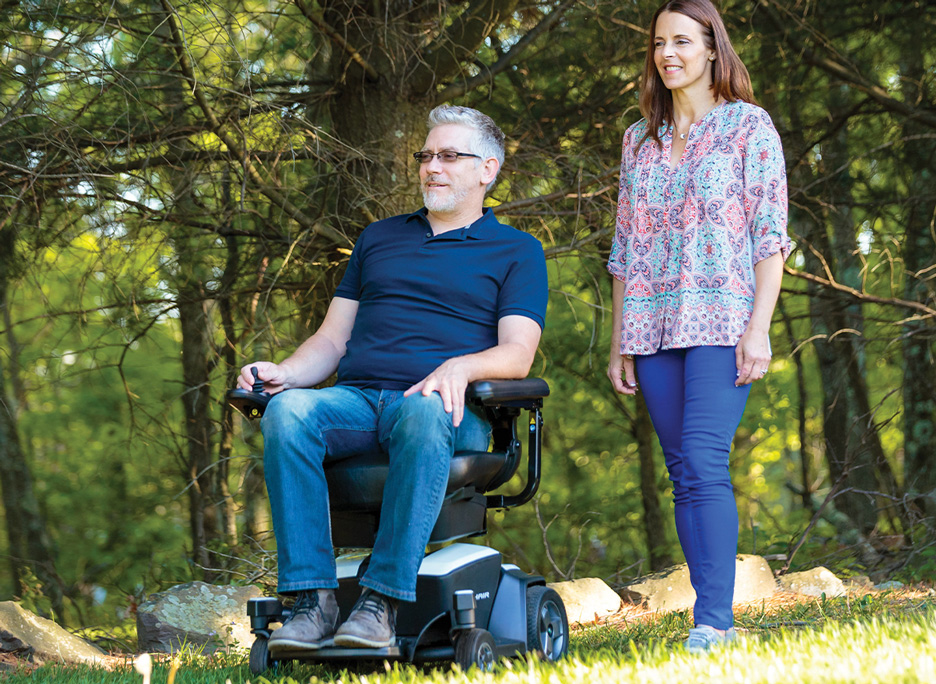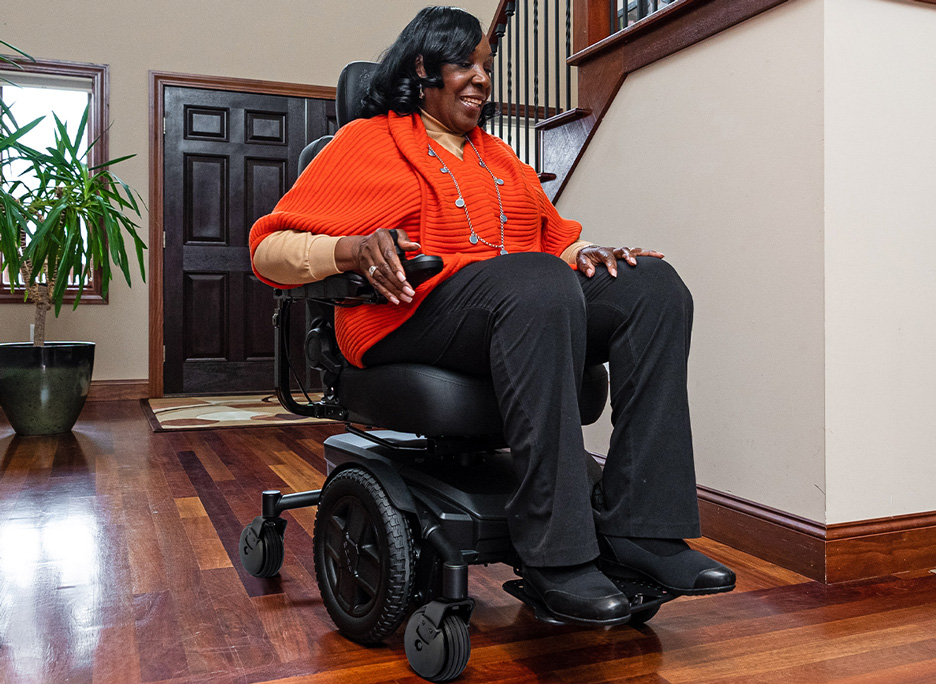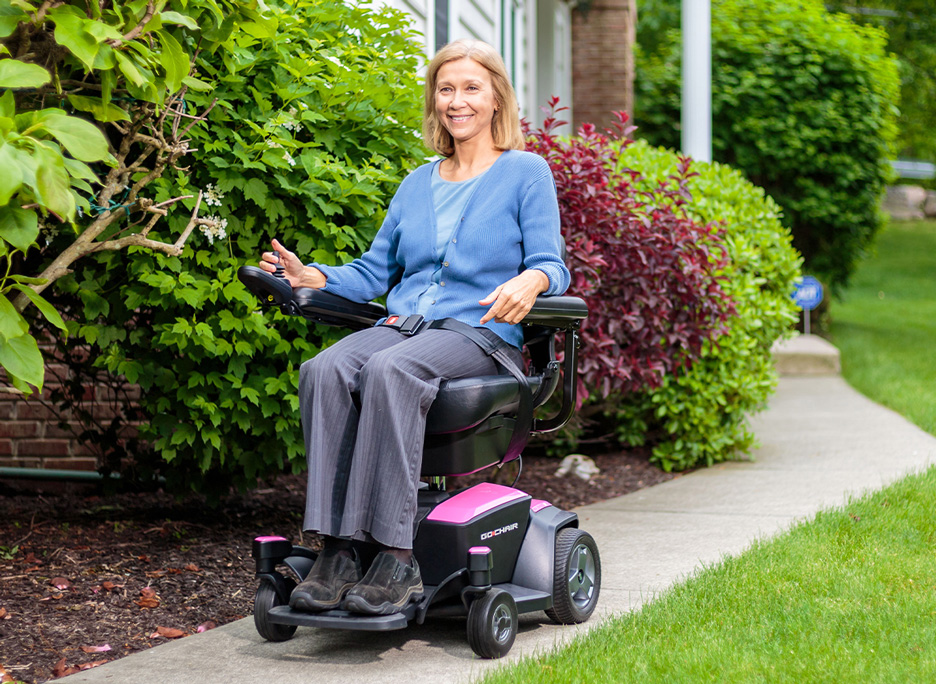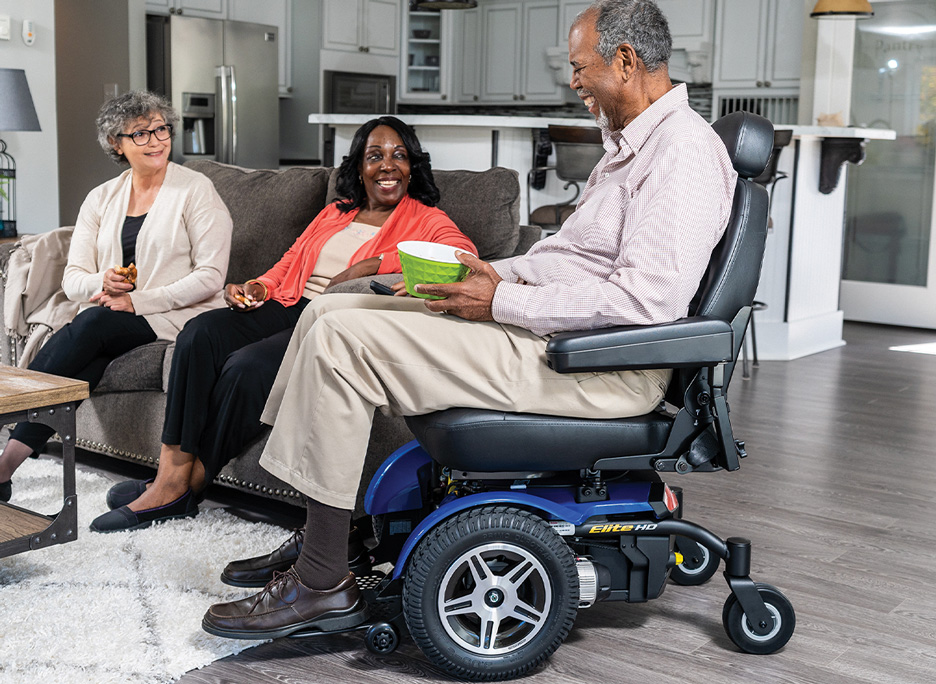6 Tips to Choose the Best Power Wheelchair
Power Wheelchairs are typically customized and prescribed by an occupational therapist (OT). In Ontario, they are purchased through the Assistive Devices Program (ADP) and must be decided by an ADP authorizer. For the same reason you can’t prescribe your own heart medication, you can’t typically pick out and purchase your own power wheelchair. The features you require will be customized fully by the provider for clinical positioning. Call Silver Cross to connect with an ADP authorizer near you and book an at-home demo.
Below is a list of factors your occupational therapist or ADP authorizer may consider when specifying your prescription.
1. Type of power chair
When selecting the right type of power wheelchair, your prescriber will consider the frequency and duration you will be using the chair and if the chair will need to be transported. Will you be in it all day? Will you only need it occasionally? Do you travel regularly by car? These are all important questions to consider when deciding between travel and full-size or heavy-duty power chairs.
Travel power wheelchairs are normally front or rear wheel drive. They can fold or can easily be dissembled by removing the seat, battery, and base to fit in a trunk of a car or in airplane cargo. These chairs tend to be smaller, so they are great for apartments, malls, and even cruises. They typically offer less seat padding, so it may not be comfortable to spend most of your day in the chair, or if extra support is required. The weight capacity is typically around 300 lb.
A full-size power wheelchair may be a better choice if you spend most of the day in the power wheelchair. Full-size power chairs generally have larger seats, armrests and footrests as well as more padding for comfort. They also have a greater travel range (the distance it can travel before the battery needs to be recharged) since the battery is larger than travel/portable power wheelchairs. The weight capacity is normally around 300 lb.
People who are over 300 lb will need to purchase a heavy-duty power wheelchair with a reinforced frame and wider seat area. The wheels and casters for this type of chair will tend to be wider to support the user. The weight capacity for most heavy-duty power wheelchairs is around 450 lb. More specialized wheelchairs typically have a weight capacity around 600 lb., and some manufacturers produce power wheelchairs with a weight capacity up to 1,000 lb.
2. Drive system
Your provider will consider where you will use the power wheelchair when deciding between front-wheel, mid-wheel, and rear-wheel drive systems.
Front wheel drive is located towards the front of the power chair’s seat. The drive wheels are located in the front and the casters in the rear. Front-wheel drive power wheelchairs can go over bumps and curbs up to 2″ high. This drive system does not have the smallest turning radius, but it maneuvers very well around tight corners. Although this drive system is known for providing good stability, it can fishtail when turning at high speeds. If the battery is located at the rear of the chair, it offers a stable ride when travelling up and down slopes (since the load is balanced with the front wheels).
Mid wheel drive, also known as center drive, is located at the center of the wheelchair, below the seat. This drive system has the tightest turning radius of the three drives and is great for use in apartments, malls and anywhere space is limited. Mid-wheel drive is very easy to maneuver indoors or on flat surfaces outdoors, but it does not maneuver as well over rough terrain. It can also sink and lose traction when travelling over soft terrain, but is stable when travelling on an incline. Usually, an accessible van or vehicle lift is required to transport the since it is not easy to lift. Power wheelchairs with mid wheel drive systems are generally available for weight capacities up to 600 lb.
Rear wheel drive is located towards the back of the power wheelchair with casters in the front. Rear wheel drive provides greater maneuverability, even while travelling at higher speeds. It maneuvers well over rough, outdoor terrain. Rear-wheel drive has directional stability, meaning that it naturally tracks straight, so it is less sensitive to oversteering. Due to its larger turning radius, it needs more space to make turns.
3. Living conditions
For use indoors, make sure the power wheelchair can fit and maneuver through hallways and rooms. Measure the doorways in your home (be sure to account for hinged doors which can reduce the doorway opening by 2″). The doorway opening should be large enough for the power wheelchair as well as the armrests and joystick if it protrudes beyond the base of the chair. You should also be able to navigate through hallways and make 90° turns into rooms. Spacing in bathrooms is typically tight and must be considered—can the power wheelchair maneuver around the toilet and sink? If your home has more than one floor, consider a wheelchair lift and pay attention to the weight of the chair with you in it (many wheelchair lifts have a weight capacity of 750 lb.).
The prescriber should consider if the power wheelchair will fit under the user’s tables/desk in their home. They should consider if the armrests and controls also fit under the table/desk. For higher hard-to-reach surfaces such as countertops, an elevating mechanism may be considered.
For use outdoors, the terrain will affect the range of the chair, including your driveway and porch. Homes with porches/decks may benefit from the installation of a porch lift. Call Silver Cross to learn more.
4. Seating, positioning, and fit of the power wheelchair
Most users spend a lot of time in their power wheelchairs, so seating and positioning are very important for their health and comfort. The power wheelchair will have to accommodate custom backrests and seat cushions made of contouring foams, gels, and other materials for those who require additional support. Individuals who are unable or have limited ability to shift their weight should select a power wheelchair that can tilt-in-space or recline to relieve pressure and increase blood flow. Tilt-in-space changes the orientation of the chair without changing the angle of lower body. Recline changes the degree of recline for the backrest while elevating the legs. These types of chairs can also ease transfers for caregivers and help manage the posture of the user.
The rider must also be properly measured and fitted for the power wheelchair to ensure that all their space and positioning needs are met. An ill-fitting power wheelchair may result in ailments such as pressure sores and can exacerbate pre-existing conditions. Your prescriber will help ensure that the right fit power wheelchair is selected.
5. Controller
The most common controller for power wheelchairs is a joystick and keypad. The joystick controls the direction and speed in some models. The keypad can also control speed and other functions such as degree of recline and horn. Most require constant pressure to operate and will brake once the pressure is lifted from the control. Depending on the physical condition of the user, the power wheelchair must be able to accommodate other types of controllers. Learn more about the types of controllers here.
6. Speed of the power wheelchair
Your prescriber will determine the right chair for the speed you would like to go. Power wheelchairs usually travel at about 4–6 miles per hour. Rear wheel drive power chairs are easier to maneuver at high speeds.
Get a quote!




